Imagine a world where monstrous beasts, with jaws large enough to crush bones and attitudes as fierce as their appearance, roamed the wilds of ancient North America. These were the entelodonts—creatures so terrifying and formidable in their time that paleontologists have dubbed them “hell pigs.” But don’t be fooled by the nickname; entelodonts were not pigs. They were a unique family of prehistoric mammals with a story as dramatic as any blockbuster movie. Their saga is one of power, survival, and a mysterious disappearance that still fascinates scientists and nature lovers alike.
What Were Entelodonts?
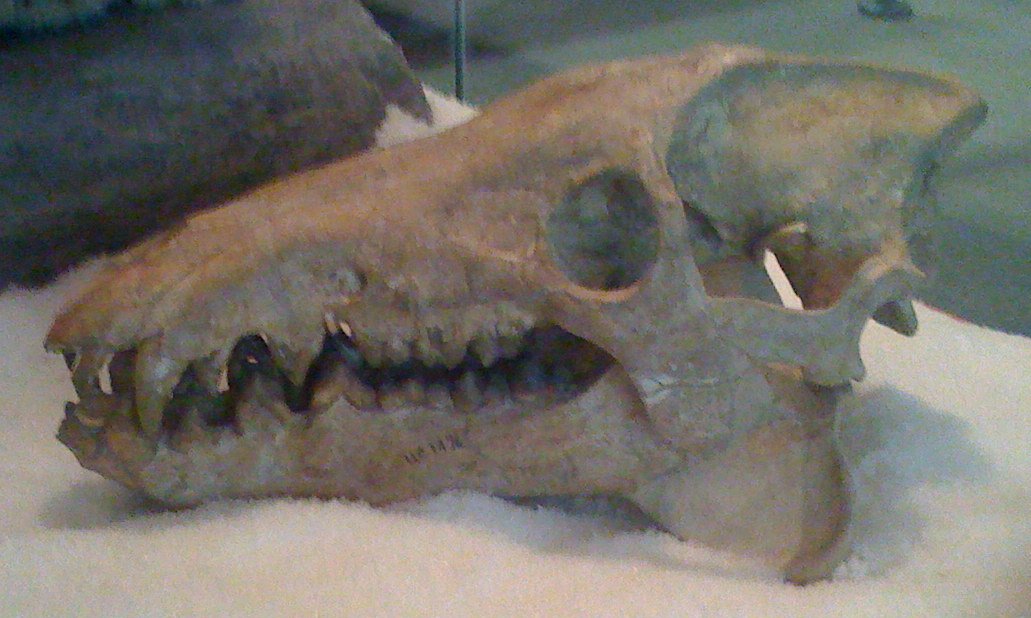
Entelodonts were a family of extinct mammals that lived from the late Eocene to the Miocene, roughly 37 to 16 million years ago. Despite their common name, “hell pigs,” they were not closely related to modern pigs or boars. Instead, these creatures belonged to a group called artiodactyls, which includes animals like hippos and whales today. Entelodonts were truly unique, blending features from several different animals into one bizarre package. Their massive skulls, elongated jaws, and oversized teeth made them instantly recognizable among prehistoric mammals. While their bodies looked somewhat pig-like, their evolutionary lineage sets them apart from anything alive today.
The Physical Appearance of a Nightmare
If you could travel back in time to encounter an entelodont, you’d be struck by its horrifying appearance. Some species stood as tall as a horse, with muscular bodies supported by long, sturdy limbs. Their heads were disproportionately large—sometimes longer than a grown man’s arm—with huge, gaping jaws lined with sharp, crushing teeth. Entelodonts had thick, bony lumps on their skulls, possibly used for protection or display, adding to their fearsome look. Their eyes sat high on the skull, giving them a wide field of vision, perfect for spotting prey or rivals. This combination of features gave entelodonts a menacing profile, making them one of the most intimidating mammals of their era.
Predators or Scavengers: The Diet Debate
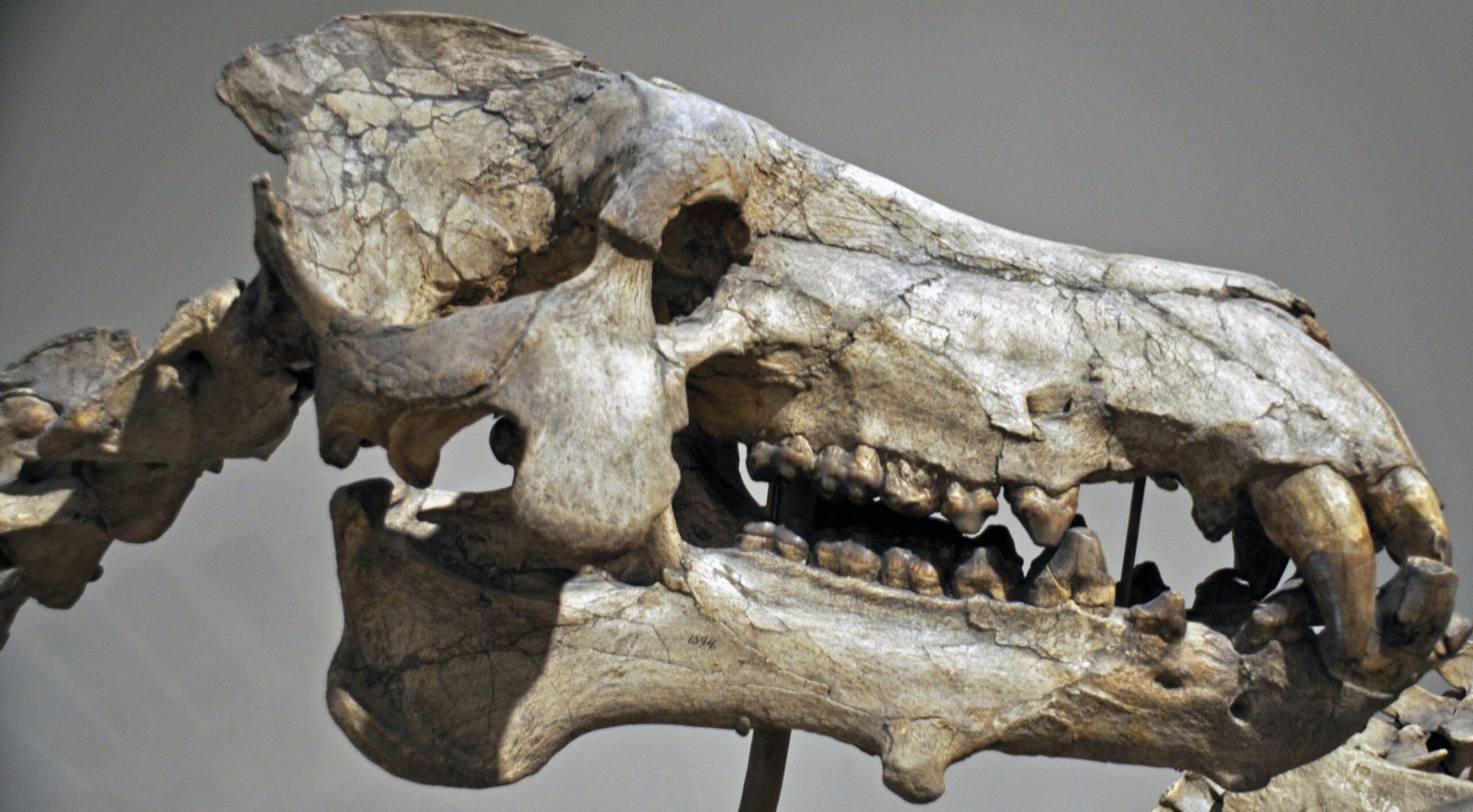
For decades, scientists have argued over whether entelodonts were fearsome predators or ruthless scavengers. Their massive jaws and powerful bite suggested they could kill and eat other large animals. Fossil evidence shows that entelodont teeth were capable of crushing bones, hinting at a diet that included plenty of meat. However, their teeth were also well-suited for eating tough plant material, making them likely omnivores. Some paleontologists believe they chased down prey much like modern wolves, while others imagine them bullying smaller predators away from kills—similar to what hyenas do today. The truth probably lies somewhere in between, with entelodonts eating whatever they could get their jaws around.
Life in Prehistoric North America
Entelodonts roamed the open plains, woodlands, and river valleys of prehistoric North America. Their fossils have been found from the Dakotas to Texas, revealing that these animals were widespread and adaptable. The climate during their reign was changing, with forests giving way to more open grasslands. Entelodonts’ long legs and strong bodies allowed them to travel great distances in search of food and water. They likely encountered other iconic prehistoric animals, including nimravids (cat-like predators) and early horses. This dynamic environment pushed entelodonts to evolve into versatile survivors, able to thrive in harsh and shifting landscapes.
Fossil Discoveries and What They Tell Us
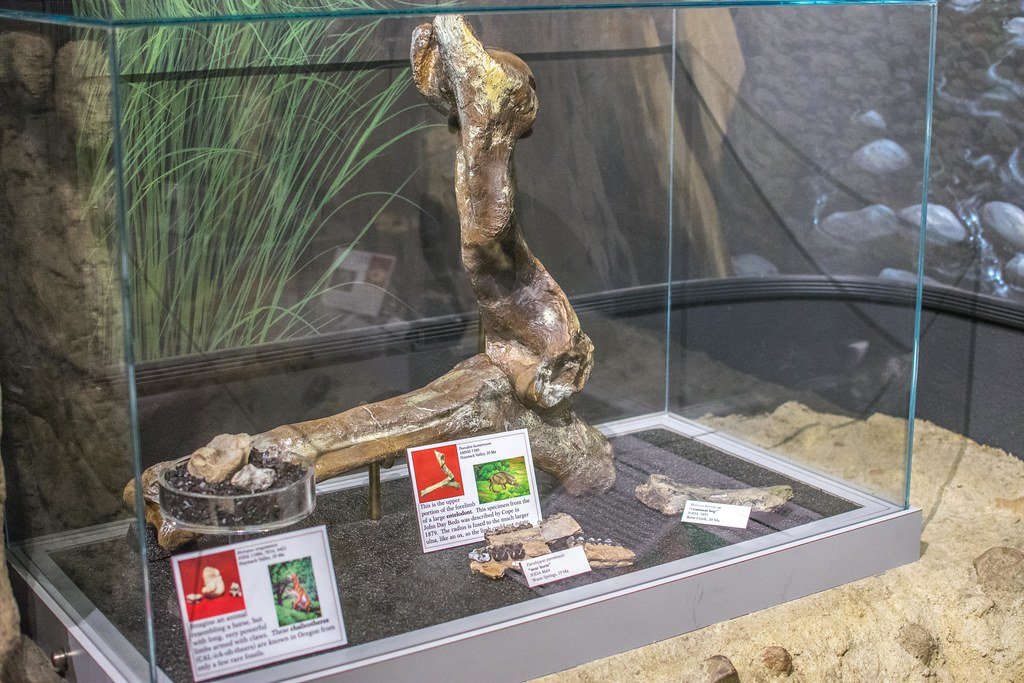
The first entelodont fossils were discovered in the 19th century, puzzling scientists with their strange mix of features. Since then, paleontologists have uncovered thousands of bones, teeth, and even nearly complete skeletons. These fossils reveal a wealth of information about entelodont anatomy, behavior, and evolution. For example, bite marks on bones show that entelodonts sometimes fought each other, possibly over territory or mates. The distribution of fossils also helps scientists map their ancient habitats and migration patterns. Each new discovery adds another piece to the puzzle, painting a vivid picture of life millions of years ago.
The Largest and Fiercest: Daeodon
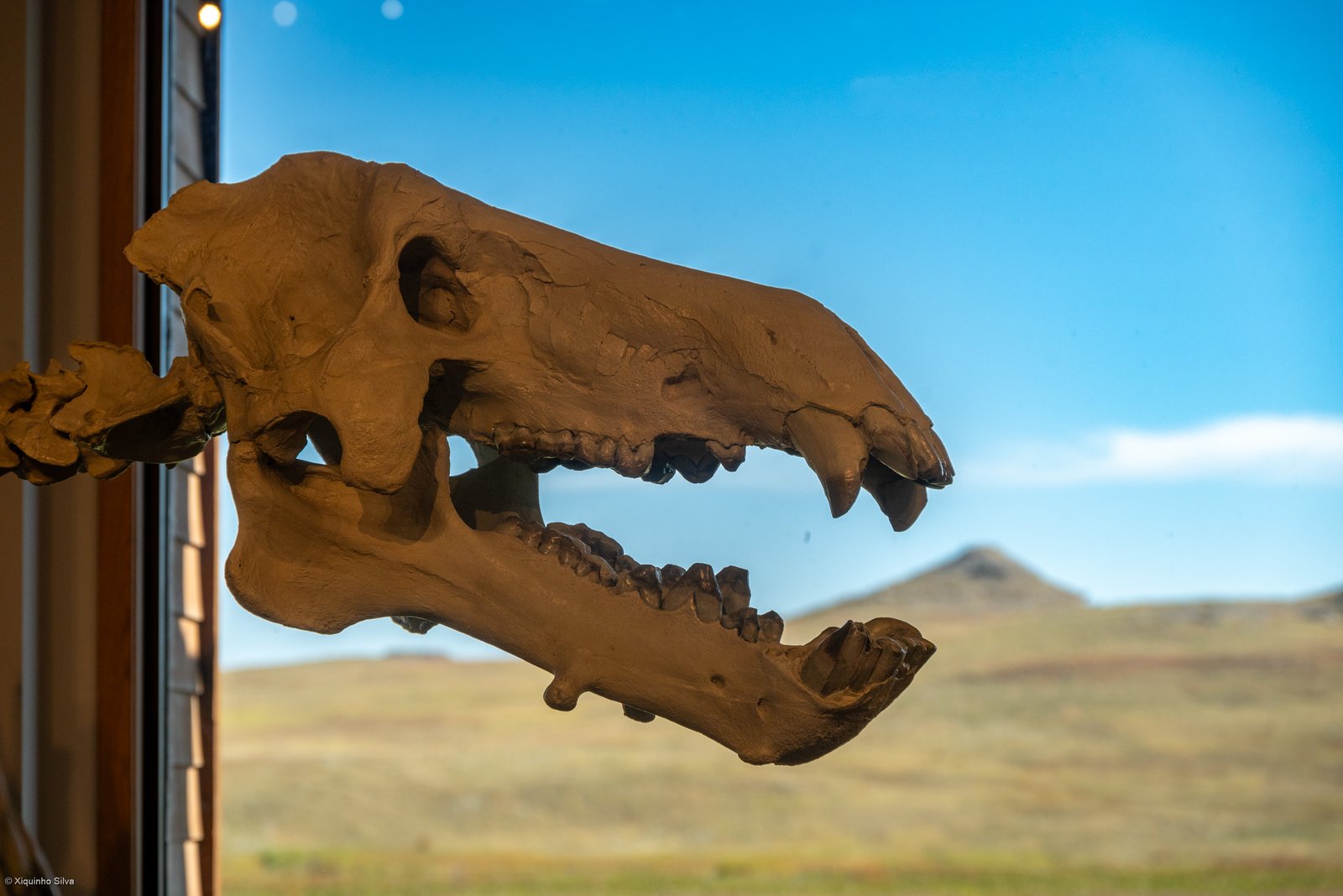
Among the entelodonts, one species stands out as the true king of the hell pigs: Daeodon shoshonensis. This giant could reach over six feet tall at the shoulder and weigh up to 2,000 pounds—bigger than some modern-day bison. Daeodon’s skull alone was nearly three feet long, lined with teeth that could crush almost anything. Paleontologists believe Daeodon was both a formidable predator and an aggressive scavenger, dominating its ecosystem in ways few mammals ever have. Its sheer size and power made it nearly untouchable by other predators of its time, earning its reputation as one of the most terrifying mammals in history.
Strange Adaptations and Survival Strategies

Entelodonts boasted several strange adaptations that helped them survive in tough prehistoric environments. Their strong jaws and teeth allowed them to eat a wide variety of foods, from tough roots to the bones of dead animals. The bony bumps on their heads may have been used in head-butting contests, much like the battles between modern-day bighorn sheep. Entelodont limbs were built for both speed and endurance, suggesting they could chase prey or travel long distances to find food. These adaptations made entelodonts successful for millions of years, outlasting many of their competitors.
Social Behavior: Lone Wolves or Ruthless Packs?

The social lives of entelodonts remain a tantalizing mystery. Some scientists think they were solitary, roaming the plains alone in search of food. Others suggest that, like modern pigs or wolves, they may have formed groups or even hunted cooperatively. Bite marks on fossilized bones hint at violent clashes between individuals, possibly over mates or territory. There’s even a chance that entelodonts cared for their young, teaching them how to survive in a dangerous world. Without direct evidence, much remains speculation, but the possibilities spark our imagination and keep researchers digging for more clues.
Why Did Entelodonts Go Extinct?
The sudden disappearance of entelodonts from the fossil record remains one of paleontology’s great mysteries. As North America’s climate changed and new competitors like true carnivores and more advanced herbivores evolved, entelodonts may have struggled to find their place. Their large size and dietary flexibility weren’t enough to save them from extinction. Some scientists suggest that changes in vegetation and the spread of grasslands made their traditional food sources scarce. Others point to competition with faster, smarter predators as a major factor. Whatever the cause, the end of the entelodonts marked the close of a wild and ferocious chapter in North American history.
The Legacy of Hell Pigs in Modern Science
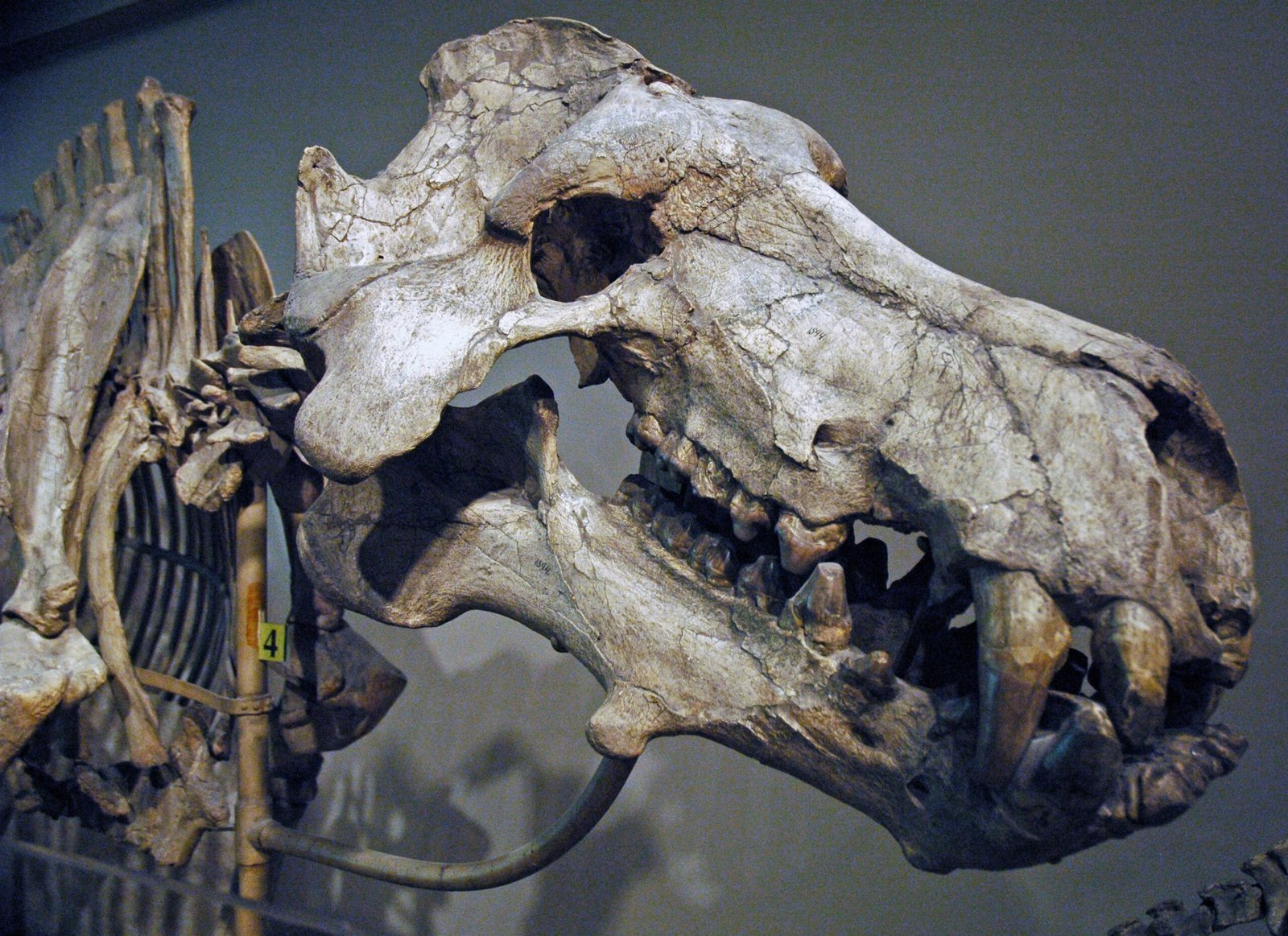
Entelodonts continue to inspire awe and curiosity in scientists and the public alike. Their fossils are prized in museums, where visitors stare in disbelief at their massive jaws and fearsome teeth. For paleontologists, studying entelodonts sheds light on the evolution of mammals and the dramatic environmental changes that shaped our world. Their story reminds us that nature can produce creatures far stranger and more terrifying than anything in our nightmares. Even after millions of years, entelodonts still have the power to shock, inspire, and captivate anyone who learns about them.
Lessons from the Rise and Fall of Entelodonts
The story of the hell pigs offers powerful lessons about survival, adaptation, and extinction. Entelodonts thrived for millions of years by being tough, adaptable, and opportunistic. Yet even the fiercest animals can be brought down by changes in climate and competition. Their tale is a reminder that nature’s balance is delicate and ever-changing. In a world facing rapid environmental change today, the fate of the entelodonts serves as both a warning and a source of inspiration for those who love and study the natural world.



